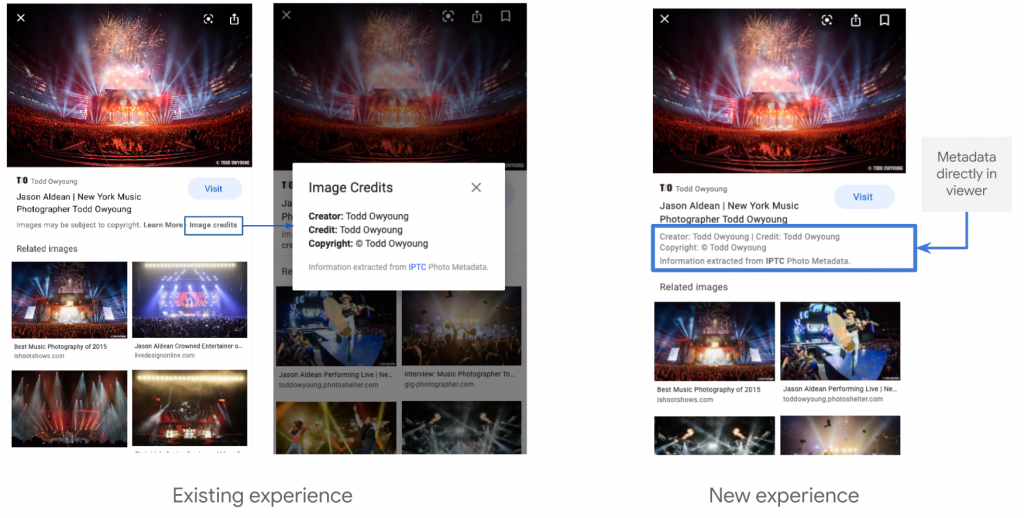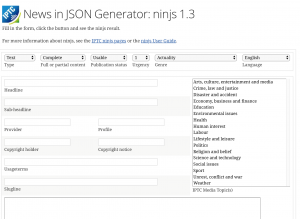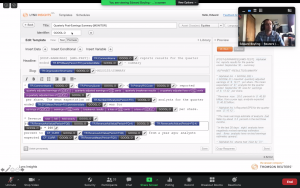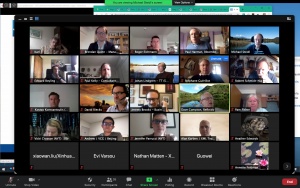Categories
Archives
Previously, we shared that Google was making image credits and usage rights information more visible on Google Images. Google now displays information about image copyright and ownership details, alongside creator and credit info, when websites and photo-owners make that information available for Google to crawl. Since the announcement there has been steady growth in the amount images containing these embedded metadata fields, which in turn has helped drive greater user awareness of copyright for images on the internet.
Up to now, users have seen the IPTC metadata information when they click on the “Image Credits” link in the “Google Images viewer” – the panel that appears when a user selects an image. Starting from today, users will begin to see this information directly in the viewer, making this rights-related information even more visible.
You can see an example of what this looks like below:

The Google Images team has said in a statement: “We are committed to helping people understand the nature of the content they’re looking at on Google Images. This effort to make IPTC-related information more visible is one more step in that direction.”
For more information on how you can embed rights and credits metadata in your photos, please see our Quick Guide to IPTC Photo Metadata and Google Images.
If you create photo editing or manipulation software and are looking for more information, please consult the Quick Guide or contact us for more information and advice.
We are very happy to continue working with Google and our partner organisation CEPIC on this and other developments in this area. We look forward to making an announcement about the launch of the related “Licensable Images” feature over the summer.

At last week’s Spring Meeting IPTC updated the News in JSON standard (ninjs) to version 1.3. The JSON schema of the new version can be accessed at https://www.iptc.org/std/ninjs/.
The updated schema now has support for trust indicators, genre, other types of headlines and a way for providers to enter their own alternative IDs.
Version 1.3 is backwards-compatible with previous versions of ninjs and makes no breaking changes.
It includes the following new properties and structures:
- genre follows the structure of other objects in ninjs with the possibility to add a code, a name and a reference to a scheme of the code to indicate the genre of the news item.
- trustindicator is also an object with properties to indicate and point at documents describing the providers status according to defined trust indicators. Read more about trust indicators here.
- There has been a demand for other types of headlines, such as “subhead” or “mobile headline”. The original headline property is still in the schema. But in version 1.3 it is now accompanied by a headline_ construct which works in the same manner as body_ and description_. Providers can now add other types of headlines and name them to indicate format and/or type.
- altid is a property that is open to the provider’s own definition of both names and types of sub-properties. That way providers can include alternative IDs as they originally appeared.
- The 1.3 schema also includes a $standard object which contains properties for name, version and reference to the schema that the item follows. This is not (yet) supported in software tools but the idea is that tools could look up the schema for which a document is written, similarly to the way that XML allows users to state the XML Schema that should validate a document.
The user guide, sample generator and GraphQL sample have all been updated according to the 1.3 additions.
ninjs 1.3 will soon be included in the SchemaStore.org JSON Schema repository, to aid with editing and validation of ninjs 1.3 files in a range of popular code editors such as Visual Studio Code and Visual Studio 2013+, IntelliJ IDEA, PyCharm and PHPStorm.
For more information, please see:
- The ninjs GitHub repository
- ninjs example documents
- The ninjs User Guide
- The ninjs 1.3 JSON Schema specification
If you have any questions or comments, please contact the News in JSON Working Group via the public ninjs discussion group, or contact IPTC via the Contact Us form.

Last week IPTC did something we had never tried before: we ran a complete three-day member meeting virtually, using videoconferencing, which worked very well! Thanks to all our participants and presenters.
Spread over three days, over 50 attendees from the majority of IPTC member organisations across 16 countries heard over 20 presentations from IPTC Working Groups, IPTC member organisations and invited speakers on topics from AI-generated stock photography to tracking entities in news stories. The culmination of the event was the approval of new versions of ninjs, NewsML-G2 and Video Metadata Hub, and the (re-)election of Robert Schmidt-Nia as Chair of IPTC.
Monday: Photo Metadata, Sport and Web Publications
Monday set the tone with an introduction from IPTC Managing Director Brendan Quinn, and introductions from all attendees. Michael Steidl gave the first Working Group update as Lead of the Photo Metadata Working Group, covering the group’s wide-ranging work over the past six months including releasing the Photo Metadata Standard 2019.1 including Image Regions, plus partnership projects with Google on exposing embedded IPTC Photo Metadata fields in search results, and emerging work with camera industry association CIPA and schema.org.

Laurent Le Meur, previous IPTC board member and currently CTO at EDRLab, gave a thought-provoking presentation on W3C Web Publications spec and how it might apply to the news publishing industry. Paul Kelly, lead of the Sports Content Working Group presented his group’s investigations into semantic modelling for sports content, looking at existing sports models and current projects investigating schema.org and semantic / linked-data modelling of sports information, which will feed in to an upcoming version of SportsML.
Tuesday: NewsML-G2, ninjs, Robojournalism, AI, Blockchain, Trust and Video
Tuesday was a busy day: we started with Dave Compton from Refinitiv, lead of the NewsML-G2 Working Group, presenting the group’s latest work including their proposal for NewsML-G2 2.29. Johan Lindgren of TT and lead of the News in JSON Working Group presented a proposal for ninjs 1.3, including many updates suggested by users and the community.
Ed Boyling of Thomson Reuters demonstrated a tool called Lynx Insights that is used by TR to generate news stories based on a rich set of rules defined by journalists. After a rule is created, an incoming news event (such as a company publishing a set of financial results) can automatically be converted to a readable story published on the wire within seconds.
Tao Chen of 500px (part of IPTC member Visual China Group) and lead of the AI Expert Group presented their latest work on AI for images, including automatic quality detection, face anonymisation, subjective feature detection (photos about “happiness” or “romance”), moving from simple face detection to age, gender and celebrity detection, automatic cutouts and more.
Angelo Marrara of ANSA and some project colleagues from EY presented their work on ANSACheck, a way of ensuring that content matches what the agency originally published using blockchain technology. The project has launched and you can see the tool embedded on ANSA’s pages.
Brendan Quinn presented IPTC’s latest work on trust and credibility in the news, including the IPTC Trust and Credibility Guidelines document draft that was published recently.
Finally, Pam Fisher of the Video Metadata Working Group presented the group’s proposal for Video Metadata Hub version 1.3, an update to clarify and simplify some points and take on some suggestions from the community.
Wednesday: NewsCodes translations, Entities, Standards Committee and IPTC Election
Wednesday started off with Jennifer Parrucci of New York Times, lead of IPTC’s NewsCodes Working Group, presenting the group’s work since the last meeting, announcing translations of the core Media Topics controlled vocabulary into Danish, Simplified Chinese and Norwegian. We now publish Media Topics in 11 languages!

Christoffer Nilsson of new IPTC member iMatrics and Joacim Ståhl of Elysium AI (part of TT) both gave presentations on their work on extracting entities (people, places, organisations and objects) from news content, and we discussed the possibility of working as a group on an industry-wide “news entities” database.
The Spring 2020 IPTC Standards Committee Meeting was led by Stéphane Guérrilot of AFP, Chair of the Standards Committee. The first part of the meeting was a wide-ranging discussion on “how to make IPTC standards easier to use”, which will lead to some interesting projects in the next few months on documentation, marketing materials, and open source software. The second part of the meeting was the formal IPTC member vote on the proposed new standard versions: we are pleased to say that ninjs 1.3, NewsML-G2 2.29 and Video Metadata Hub 1.3 were all approved!
Finally we held a General Meeting of IPTC voting Members, during which Robert Schmidt-Nia of DATAGROUP Consulting Services was elected as IPTC Chair. We also voted through a change to IPTC’s official Articles of Association, introducing a new membership category. More on this in coming weeks!
Thanks again to everyone who made our first fully virtual member meeting such a a great success!